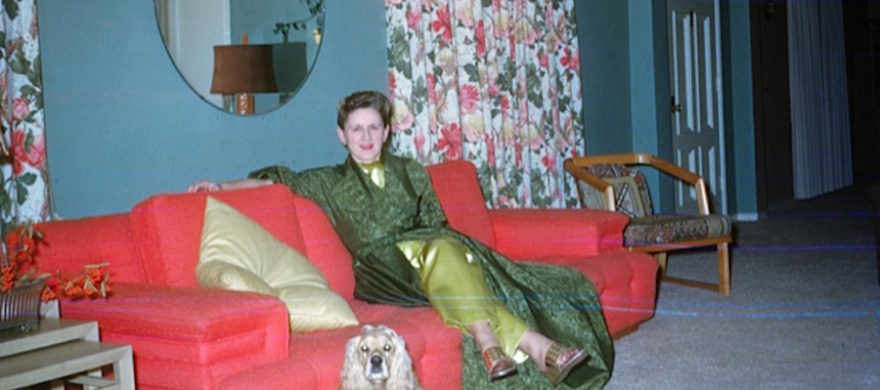
I recently visited New York and was so busy there with my super-sized days, I didn’t have a chance to see the recently opened Broadway show, “War Paint.” The production tells the story of the rivalry between the cosmetic magnates, Helena Rubenstein and Elizabeth Arden. It’s on my ever-growing to-do list for the next visit.

Nevertheless, reading about the musical triggered memories of my own connection to the world of makeup or lack thereof. As I rode the train from Brooklyn to Manhattan one soggy morning last week, there to my left and across the pole-pierced corridor that separates the bench-style seats on the subway sat a young woman deftly applying her mascara.
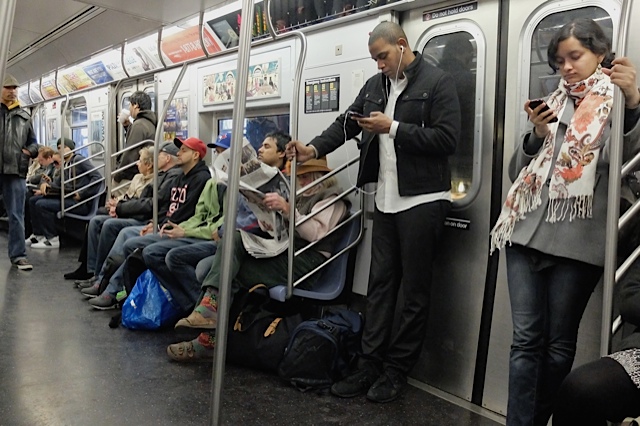
Recalling my own makeup application that very morning, complete with magnifying mirror, Q-tips, glasses on to see/glasses off to swipe, and the resulting mediocre results, I was captivated by both the young woman’s steady hand and her lack of shame. Her proficiency with the mascara wand while seated in a lurching, swaying subway car (not to mention the jostling seat mates) resulted in not one single smudge on her flawless porcelain cheeks. Then, she applied her lipstick. To both lips. I emphasize this point because, sporting only one skimpy lower lip, I’ve long coveted a full-mouthed face. My upper lip always had a predisposition to thinness, but as I’ve aged the thing has faded into oblivion as much as it has into memory–like so many other formerly desirable and fully formed body parts: perky bosoms, for example. Or, slender thighs without roadmap-resembling spider veins. Did I mention that my fellow passenger applied her lipstick without a mirror? I was awestruck.

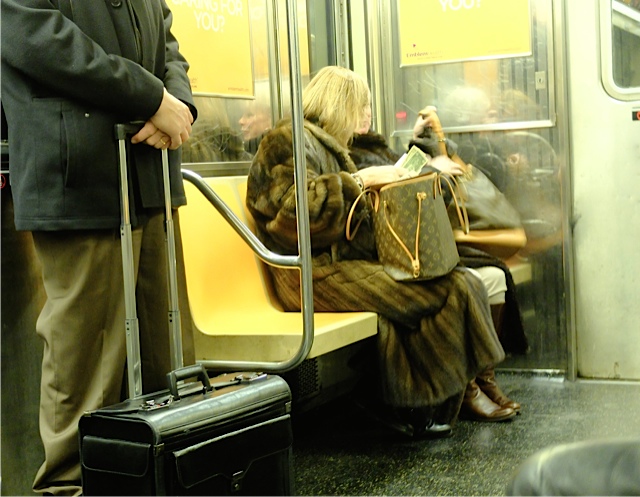
I grew up at a time when watching my mother dress, I counted the days, weeks, months, and years until I too could hook my stockings as she did—a nimble one-handed technique that latched her hose to her garters. She wore a white suit of boned armor under her shirtwaist dresses called a girdle that sucked her bits up and in, compressing her intestines to her spine. And, in her handbag she carried a jeweled compact that seemed like something Cinderella’s fairy godmother would have included in the swag bag along with the glass slippers. This dainty but indispensible item had a rhinestone sparkly top and a smooth, silver bottom. When opened, the peachy-colored pressed powder within lay beneath the teeniest and most delicate powder puff. The sound the dainty accessory made when my mother closed it (again, with one hand) had a satisfying click that indicated all systems go: bridge of nose powdered to remove the shine, teeth free of debris and lipstick. Then, she attended to her lips by first examining the remains of color before beginning her artful maneuvers. The gold-and-black tube, fished out from her often enormous–other times uselessly demure–handbag, was opened by pulling the top off with a satisfying thwump. Starting in the center of her taut upper lip, she drew the stick up and over to the left corner; then, she repeated this to the right corner. Application to the bottom lip was more of a back-and-forth swipe—a couple of times. Before closing the compact, there was a pressing together of her lips with a kind of rolling motion to ensure that the waxy product was in place. Further insurance was often necessary in the form of a nearby napkin, which was sacrificed for blotting. Teeth were once again bared like a lioness as my mother did her final mirror inspection. Her compact was then snapped shut and replaced in her purse. Lunch or dinner was now over. It was time to go.
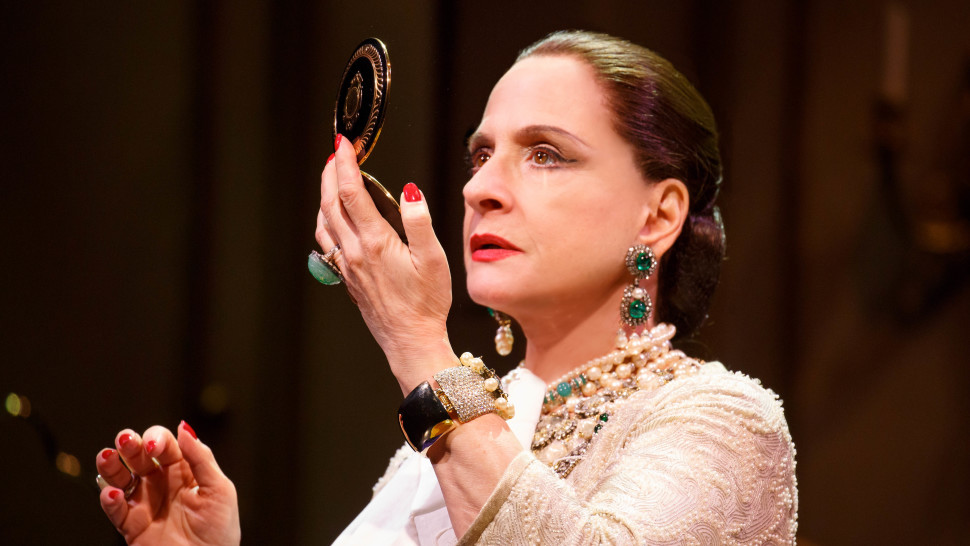
Incidentally, this routine was repeated in our home when my mother heard my father’s car drive into the garage at the end of his workday. Instead of the purse compact, the hall mirror was used. The crooner and housewives’ heartthrob, Jack Jones, captured her nightly ritual perfectly when he sang, “Wives and Lovers.” While the lyrics might make you renew your long outdated subscription to “Ms. Magazine,” it was middle-class reality in the suburbs of the late 1950s. Perhaps, this explains the high rate of alcoholism among the women in my neighborhood.
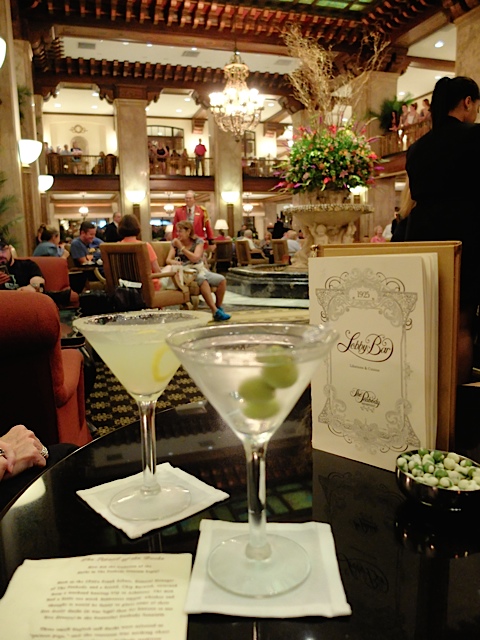
My mother’s favorite lipstick was Revlon’s Cherries in the Snow. Who knew, upon research for this blog, that this too was the go-to choice for the author and eventual suicide victim, Sylvia Plath? No matter how intellectual, or despondent, or both, I guess, lipstick was her hope in a tube. She also reportedly had very full lips, but I digress…
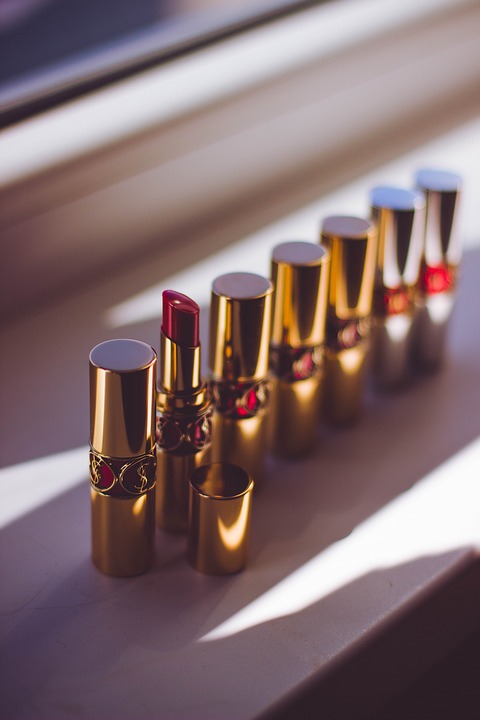
About once a month, my parents and I went to visit my father’s eldest sibling in Oakland. My Aunt Rose was the first of 5 children to arrive from Russia—at the dawning of the 20th century—carrying her already overly used satchel (pogroms were among the first frequent-flyer motivators) and sporting a sign which dangled from her 7-year-old neck. This unbecoming necklace was bestowed on her at Ellis Island. It read: “Stockton, California” and was to be her long journey’s destination. Her various siblings soon followed as was the well-worn path of many an immigrant. There were no aliens then just alien experiences and unfathomable circumstances. Some weathered these travails through luck or connections or money; others, like my family, plodded through the filthy, teeming streets and made their lives into something enviable. Along the way, though, familial relations were strained and often severed. Religious traditions were at times observed with reverence but often discarded when the temptation of assimilation was too seductive. Money was shared when possible, but usually there wasn’t enough of it to divvy up.
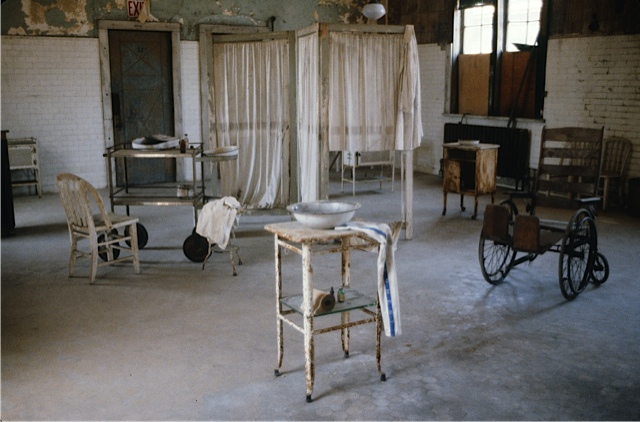
Rose, however, married well and she and my Uncle Max raised two children in a part of Oakland where the backyards were large and lush. Each child had their own bedroom, and the home’s living room furniture was expensive enough to warrant keeping the crimson velvet drapes drawn so there was no exposure to sunlight. Ever.
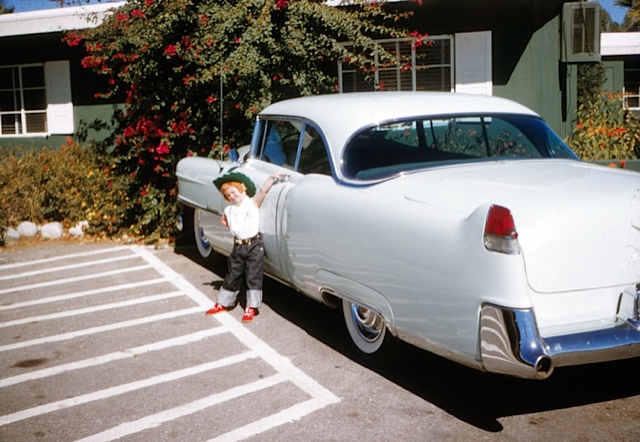
Our drive to the Shermans’ lasted about 45 minutes and always took place in the evening. We arrived for cocktails and stayed through dinner, dessert, and a hand or two of bridge. For this reason, I never recall our departure because I had fallen asleep in my cousin Vera’s childhood bedroom upstairs. My father carried me out to the car when it was time to go home. It was late enough to have won a rubber of bridge; early enough to avoid helping his sister with the dishes.
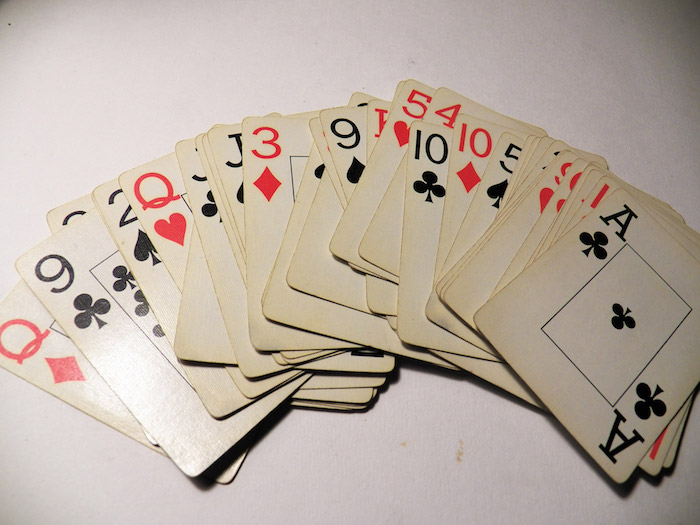
My aunt’s home was filled with fringe-hemmed couches and chairs, plush and upholstered with buttons and scratchy top stitching. The main staircase had a shiny, solid wood banister the width of which was wide enough to accommodate my bottom on its dare-devilish slide down from the second-floor landing to the marble entry. In the home’s first-floor den was a green-felted surface atop a card table intricately inlaid with colorful stones in raised mosaics of clubs, hearts, spades, and diamonds. Aunt Rose’s home was a treasure trove of tactile delights that provided endless moments of diversion for me.
For my aunt’s daughter Vera, her daughter-in-law Claire and my mother, their pre-dinner but post-cocktail diversion was equally gleeful. Or so it sounded and looked to me. Rose’s daughter, my first cousin, was a grownup whose age was closer to my mom’s than mine. This was also true of Claire. Rose, being so much older than my father, who himself was 13 years older than my mother, was more akin to a grandmother as I think about these events now. So, to my mother, she must have seemed more like a mother-in-law than a sister-in-law. I tell you this because what happened next, each and every time we visited, had little to do with Rose. Aunt Rose would greet us with wet, sticky kisses and in her thick, nearly incomprehensible Yiddish-infused English she might say, “Dahlinks!!! Vhy dun’t you come in, set dun your tinks on the sofa. Velvel (my dad’s name), did you get everysing from da makchine (car)?”
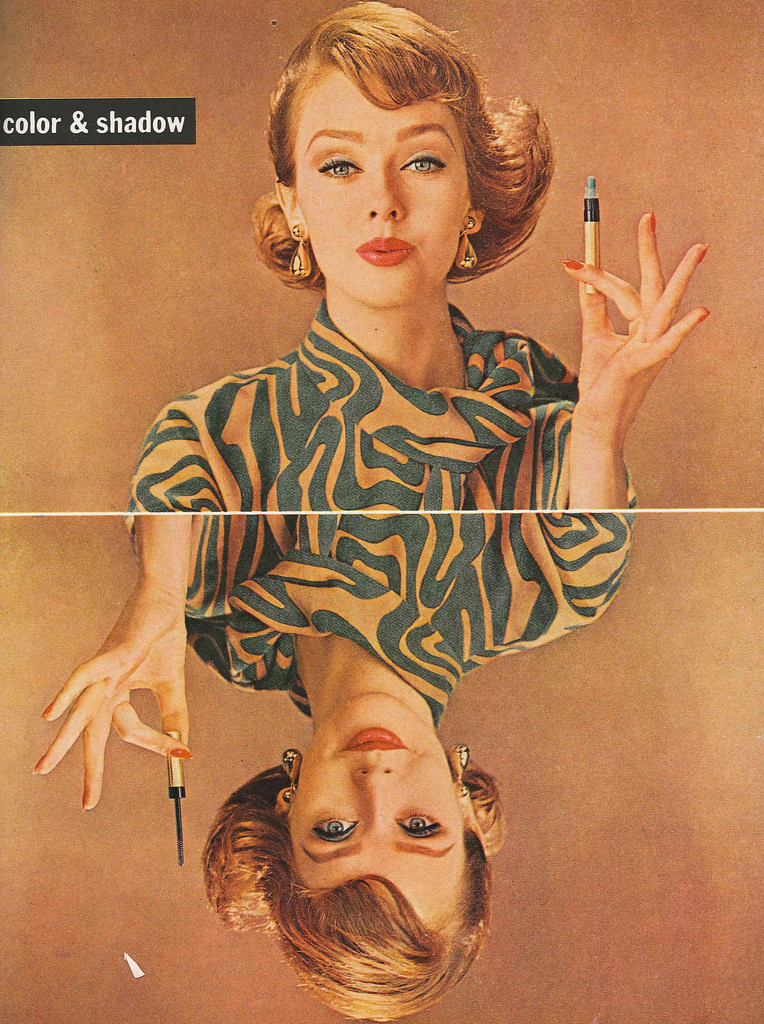
And I scooted off but not before watching my mother hang up her coat and then open up her handbag to reveal her newest shade of lipstick. This was my mom’s way of bonding with her two contemporaries with whom she had nearly nothing in common—not in style, nor heritage; not in religion, nor in interests. Her peace offering was her lipstick and in this arena, my mother was a goddess who came bearing information and, better yet, presents–from department stores Vera and Clair felt excluded from. Were these stores too expensive? Too pretentious? Probably just too hard to get to–of these 3 women, only my mother drove. She often gifted the ladies their own tubes of luxurious tubes of paint: thick, glossy sticks in shades of mandarin orange, deep magenta or subtle lavender. As time moved along, the early 1960s hosted palettes of frosted whites and opalescent pinks—the modern shades were snickered at but quickly applied.
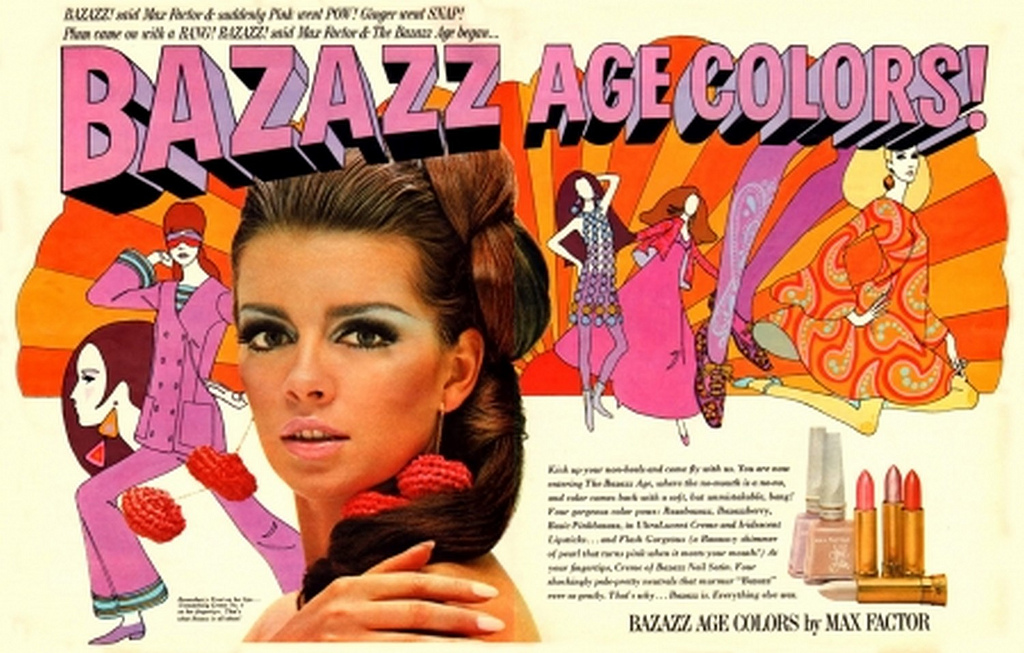
Off to the tiny and aptly named powder room the ladies scampered to share the same tube of lipstick–or to gawk as they applied their own paint. In the tiny space, they giggled and communed. If I were within earshot, I would attempt to reconcile grownup women being as silly as I was with my own adolescent friends. I was observing what was possible within the world of women. I felt their anticipation and their joy and most of all their female camaraderie. Thusly madeup, for often the addition of powder or rouge was called for, they exited the cramped space leaving remnants of color on their lips. Sometimes, though, their lips were wiped clean before emerging for one of Rose’s bowls of borscht. The soup was nearly the same color as their shade of lipstick. Maybe Chanel’s, “Beet Red”?
It was at my aunt’s home where I first heard my mother rhapsodize about her newest discovery: Cherries in the Snow. Only she was able to pull off the color of that fire-engine red lipstick. Fashion sense and curiosity could get a woman to the cosmetic counter, but it was her unmitigated sparkle and panache that made the sale.
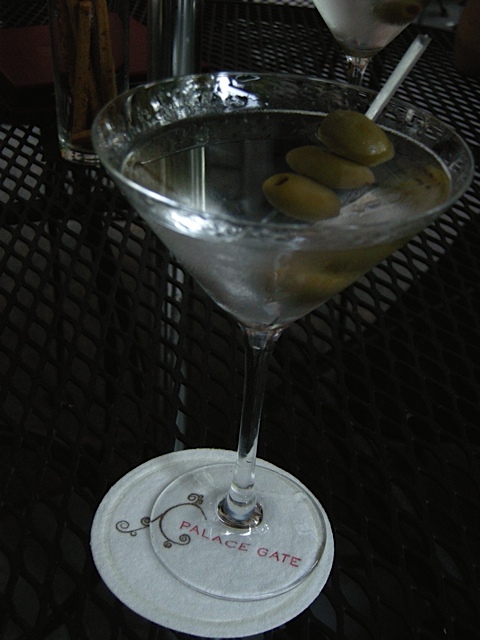
Visits to my aunt’s house decreased in frequency as my mother’s health took a turn for the ever worse. And, after she died, my father had less and less desire to see his family. A shame, really, because the diversion and the company would have been good for him…and for us.
It was nearly a year after my mother died, when we once again made the trip to the enchanted forest that was my aunt’s home. But, now I was older physically, and certainly spiritually I was raw and unraveling. The fussy living room furniture did not fascinate nor distract me. The fringed skirts dangling from the couches and chairs belonged to the fingers of children now—not to dour adolescents. I was, however, a dutiful companion to my father and as such I accompanied him to the Sherman house, however sullenly.
Upon our arrival at the Shermans’, both my cousin Vera and her sister-in-law flew at me as soon as we entered the foyer. While Rose jockeyed in position to plant her lips on my cheek, they scooped me up and removed me to the den making the excuse to Rose that they needed some girl-talk time. I was numb. Being with anyone in these recent months after my mother’s death was hardly diverting, but revisiting a familiar place, one that almost smelled like her, was nearly intolerable. I was walking on recognizable turf that was too quickly morphing into quicksand.
It was after one such visit, on the drive home, when I reached into my purse to retrieve my hairbrush. I pulled down the car’s visor so I could make sure I combed my bangs into a straight window shade of hair that duly covered my eyebrows mimicking the Twiggy look of 1966. As I placed my brush back into my purse, I felt the enormous void of space within…where my wallet should have been.
I cried out to my father to turn around at once. My Mary Quant trifold wallet, I said to him, must have fallen out at Rose’s house. He asked me if it belonged to Mary Quant why did I have it? Fathers! I told him that Mary Quant was the designer of the wallet; I was the owner. Remember? Mom bought it for me! How dense could he be? We returned to Rose’s house, to the foyer, and to the little tufted loveseat where all incoming purses were laid. The wallet wasn’t there.
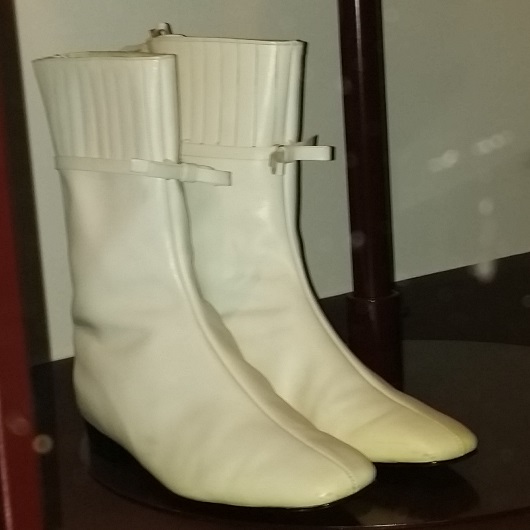
Inside was my library card, my paltry sum of babysitting money, and some form of identification that predated a driver’s license. Within the folds of the wallet were two treasured photos of my mother: one of her in a luscious, shimmering-green brocaded hostess gown complete with lime-colored pants. The floor-length hostess coat had a thigh-high slit in the front to reveal the silky pants on her legs as she crossed them while sitting on our living room couch. The other photo was of me, as a little girl, tightly hugging her. I’m holding on to her as if we both knew she would be leaving too soon. It was meant to be a playful and not an ironic pose, I’m sure.
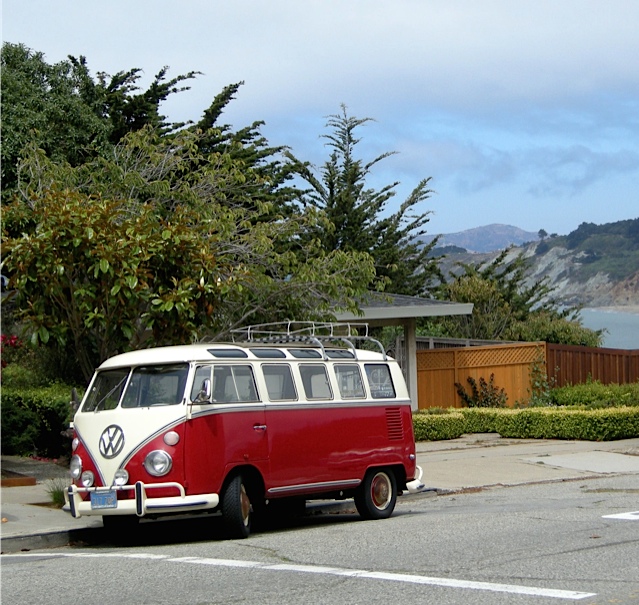
In the years that followed, I began to practice driving by chauffeuring my father and me to the Shermans’ house. Eventually, I had replaced the Mary Quant wallet with another and it was now the protector of a driver’s license, a few more dollars, and a photo of two of my boyfriends. My aunt’s house, however, seemed captured in the tangles of time. Nothing changed. The borscht had been simmering on her Wedgewood stove for years and years. The dining room was usually filled with the same supporting cast of relatives, but the conversation became more strained with 1970s political tirades by me, resulting in tongue-clicking disapproval by my uncles; my father was increasingly hard of hearing. My responses to him were often more shrill and certainly more forceful than, in retrospect, seemed necessary.

One evening, when the tension seemed to tug at my neck and stiffen my jaw, I excused myself rather abruptly and ascended the stairs without asking permission. I found Vera’s bed again and lay there in the dark listening to the now-muffled voices of the relatives in the dining room below. Years had passed since I had been in this room, and it seemed just as I remembered it. The dresser still stood by the door; but now it was no longer too high for me to see its surface. I reached out to grasp one of the perfume bottles that was placed on the dresser right next to a hairbrush with its captured hair from Vera’s scalp, I guess. There sat three framed photos: two of Vera with her husband and one of Vera with my mother and Claire. The three ladies, my mom in the middle, arms around each other sitting in Rose’s den—at the inlaid card table. As I reached to pick up the photo, I saw my Mary Quant wallet…the one I had lost so many years before…tucked behind it. Along side my wallet was a tube of Cherries in the Snow lipstick. Here before me was an altar to my mother. Someone else, besides me, had loved her. Some other female missed her regal style, her heady laugh, her kind and generous spirit. Someone else needed to hold on to her—to be reminded of her. I hadn’t thought of her as anyone other than my mom, and her absence was not just my loss.
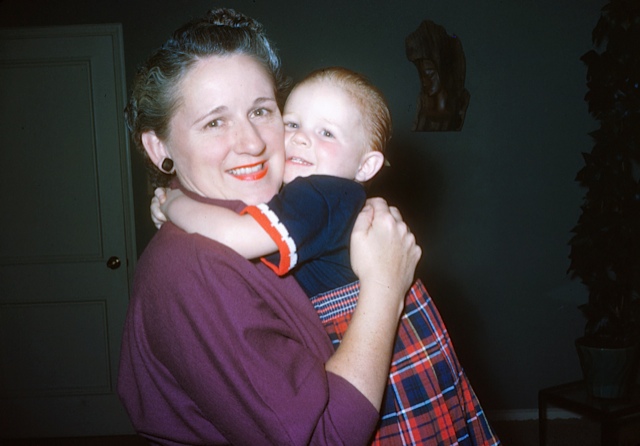
I knocked over the tube of lipstick as I grabbed my wallet and opened it up to retrieve those two photos of my mother, which I carry in my own wallet to this day. Placing the wallet back where I had found it, I carefully positioned the lipstick tube next to it.
I looked again at the framed picture of the three women, holding each other while intently looking at the photographer. It was not a spontaneous shot. Instead it was carefully posed, and my mother is holding up her gold and black tube. The portrait is of three women wearing the same shade of lipstick. This photo too was meant to be playful and not ironic. Cherries in the Snow? I imagine so. Clearly, only she could pull off that color.
Do I have lipstick on my teeth?
![]()


Wow, wow and wow! Your writing (and your story) so moves me.
Pat, whenever you comment I am so honored. Thanks, friend! XO
N-devoured your blog as I munched on Comforts Chinese chicken salad!! What beautiful, intimate, heartfelt words you have shared with your audience.. my aunt Ruthie wore cherries in the snow.. love u, thank u.. suzy
Well, my blog was in gooooood company with that chi chi! I seem to be hearing that Cherries in the Snow was the go-to shade of that era.
Thanks, Suzy, for writing. It means the world.
Ah yes, Cherries in the Snow…my mom’s too. I thought I was the only one who lost their upper lip?
Sad but comforting story… as evocative as usual.
xox
One of my friends just told me you can still buy it at Target! Not the upper lip; the lipstick 😉
So happy to hear from you. Thanks for writing.
I love, love, love your writing my darling friend. You have a unique gift and I thank you for sharing it xxxxx
Thanks, Hadassa. Your comments help boost my self confidence, I can tell you that! XO
I LOVE your stories…but I find I am so upset with them for stealing your wallet so soon after you lost your mother. Didn’t they know those photos inside would be special to you? I know it was long ago, but that’s just not right.
xoxo
Ha! I think I was crushed as I recall and confused. But, so many years later — SO MANY YEARS! — my feelings have been softened because I guess I see things through a different filter. Vera, particularly, was a complicated and somewhat unfulfilled woman. So, perhaps those photos meant more to her at the time than they did to me. Who knows? I’m so happy you read the piece and wrote to me to say so! Much love to you. Miss you!
Naomi, you did it again! Powerful piece! Your childhood comes alive for your readers in an eloquent and poignant way! I’m there! Looking for Cherries in the Snow on the Internet!! When’s your first novel coming??
How terrific to hear from you, Alice! Thank you for your generous comments. And, BTW, I hear from one friend that the lipstick can be found at Target. Maybe Target could also carry my novel one day?
But, not counting any chickens…Love you!
Hi Naomi, you brought back all the memories of the 1950’s and visiting the relatives. Great writing . Thanks, Steve
And, thank you for reading and commenting. I always always always appreciate what you have to say!
What a precious memory, Nomi! I so remember those days of my mom carrying her favorite color of lipstick and how I loved watching her apply it so lovingly. You have such a gift, x
Thank you, Wendy! What a pleasure to think of you reading my blogs. Thank you for your sweet comments. XO
You have a way of writing that brings the story to life. I can picture you and your family always…
Just home from a “vacation” to Hualalai …staying with friends. Jim and I made the right decision for us to sell, but so happy to be there again and see our Hawaii friends…
Hope you and I can meet for our coffee and chat soon.
xox
Robin
It’s good to know you’re right up the street now instead of across a large ocean. Welcome back and thank you for your beautiful comments. Talk to you soon…in person, my friend! XO
Sorry to be slow, but I need to set plenty of time aside to really soak in your words. Watching your mother get ready to go out reminded me so much of the times I did the same thing–I know the lipstick maneuver well. Your Yiddish is fabulous, written so I can hear it perfectly. Of course, we knew Vera had swiped your wallet and it was a relief to have it confirmed–with so much generosity of spirit, dear Nomi. These are such touching, funny, absorbing scenes. I look forward to the hardbound Memoir you’ll be reading from at Book Passage one of these days.
Thank you for this amazing comment, dearest Kay. I love picturing you applying your lipstick ala my mother’s (and every other female I looked up to) technique.
And thank you too for holding out for a HARDBOUND copy of my soon-to-be-published memoir (as in…hopefully in my lifetime!). May I nominate you as President of my Book Club?
Much love to you.
Dear Nomi,
So, it’s not a tea afternoon…but rather a, Gin&T afternoon, as I read your blog with the temps in the low 90’s!
I do love how you share these memories with us and how the simple stuff of daily life triggers your recollections.
They say the “devil”is in the details, but in your case, the details become loving, colorful characters, even if they are inanimate; all capable of transcending time in a “heavenly” way! 😀
As bittersweet as these memories feel to me, it’s always the sweetness that lingers most.
XO
Jules
Aha! A G & T in hand is the perfect way to read this (and most anything in the news) latest post of mine. As always, dear friend, your comments are rich with love and that means everything!
Thank you for taking the time to respond so beautifully. XO
Do you have the photo of your mom with Vera and Claire??
Oh my, this is just a beautiful piece. Bitter and sad, but transformed into compassion, sweetness, and love. The photos are precious — so glad you have them. The memories (and your telling of them) are even more precious. What a gift you have. 🙂 xoxo